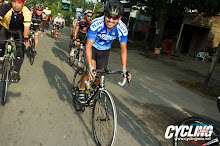'Carbohydrate loading' is probably one of the most misunderstood terms in sports nutrition. People commonly think anyone involved in sport needs to 'carb up' and the way to do this is to eat 'flat out' in the days leading up to an event. Read on to get the facts on carbohydrate loading.
What is carbohydrate loading?
Carbohydrate loading is a strategy involving changes to training and nutrition that can maximise muscle glycogen (carbohydrate) stores prior to endurance competition.
The technique was originally developed in the late 1960's and typically involved a 3-4 day 'depletion phase' involving 3-4 days of hard training plus a low carbohydrate diet. This depletion phase was thought to be necessary to stimulate the enzyme glycogen synthase. This was then followed immediately by a 3-4 day 'loading phase' involving rest combined with a high carbohydrate diet. The combination of the two phases was shown to boost muscle carbohydrate stores beyond their usual resting levels.
Ongoing research has allowed the method to be refined so that modern day carbohydrate loading is now more manageable for athletes. The depletion phase was demonstrated to be no longer necessary, which is a bonus for athletes as this phase was very difficult. Australian marathon runner, Steve Moneghetti has described the depletion phase as making him feel like "death warmed up". Today, 1-4 days of exercise taper while following a high carbohydrate diet (7-12g/kg body weight) is sufficient to elevate muscle glycogen levels.
Does carbohydrate loading improve performance?
Muscle glycogen levels are normally in the range of 100-120 mmol/kg ww (wet weight). Carbohydrate loading enables muscle glycogen levels to be increased to around 150-200 mmol/kg ww. This extra supply of carbohydrate has been demonstrated to improve endurance exercise by allowing athletes to exercise at their optimal pace for a longer time. It is estimated that carbohydrate loading can improve performance over a set distance by 2-3%.
Who should carbohydrate load?
Anyone exercising continuously at a moderate to high intensity for 90 minutes or longer is likely to benefit from carbohydrate loading. Typically, sports such as cycling, marathon running, longer distance triathlon, cross-country skiing and endurance swimming benefit from carbohydrate loading. Shorter-term exercise is unlikely to benefit as the body's usual carbohydrate stores are adequate. Carbohydrate loading is generally not practical to achieve in team sports where games are played every 3-4 days. Although it might be argued that players in football and AFL have heavy demands on their muscle fuel stores, it may not be possible to achieve a full carbohydrate loading protocol within the weekly schedule of training and games.
What does a high carbohydrate diet look like?
The following diet is suitable for a 70kg athlete aiming to carbohydrate load:
| Breakfast | 3 cups of low-fibre breakfast cereal with 11/2 cups of reduced fat milk |
| Snack | toasted muffin with honey |
| Lunch | 2 sandwiches (4 slices of bread) with filling as desired |
| Snack | banana smoothie made with low-fat milk, banana and honey |
| Dinner | 1 cup of pasta sauce with 2 cups of cooked pasta |
| Late Snack | toasted muffin and jam |
This sample plan provides ~ 14,800 kJ, 630 g carbohydrate, 125 g protein and 60 g fat.
Are there any special considerations for females?
Most studies of glycogen storage have been conducted on male athletes. However, some studies suggest that females may be less responsive to carbohydrate loading, especially during the follicular phase of the menstrual cycle. This appears to be, at least partly, because they have difficulty consuming the larger amounts of carbohydrate required for a complete CHO load. Further research needs to be conducted specifically on females.
What are the common mistakes made when carbohydrate loading?
Research indicates that many athletes who attempt to carbohydrate load, fail to achieve their goal. Common mistakes include:
- Carbohydrate loading requires an exercise taper. Athletes can find it difficult to back off training for 1-4 days before competition. Failing to rest will compromise carbohydrate loading.
- Many athletes fail to eat enough carbohydrate. It seems athletes don't have a good understanding of the amount of food required to carbohydrate load. Working with a sports dietitian or using a carbohydrate counter can be useful.
- In order to consume the necessary amount of carbohydrate, it is necessary to cut back on fibre and make use of compact sources of carbohydrate such as sugar, cordial, soft drink, sports drink, jam, honey, jelly and tinned fruit. Athletes who include too many high fibre foods in their carbohydrate loading menu may suffer stomach upset or find the food too bulky to consume.
- Carbohydrate loading will most likely cause body mass to increase by approximately 2kg. This extra weight is due to extra muscle glycogen and water. For some athletes, a fear of weight gain may prevent them from carbohydrate loading adequately.
- Athletes commonly use carbohydrate loading as an excuse to eat everything and anything in sight. Consuming too many high fat foods will make it difficult to consume sufficient carbohydrate. It may also result in gain of body fat. It is important to stick to high-carbohydrate, low-fat foods while carbohydrate loading.


No comments:
Post a Comment